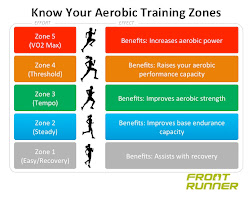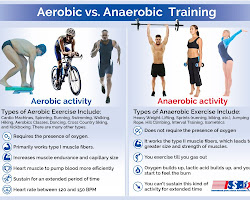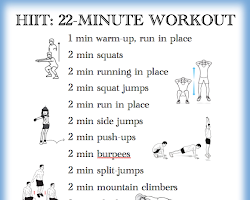Endurance is the ability to perform an activity for a long period of time without getting tired. It is an important component of many sports, including running, swimming, cycling, and rowing.
There are two main types of endurance: aerobic and anaerobic. Aerobic endurance is the ability to use oxygen to produce energy for prolonged periods of time. Anaerobic endurance is the ability to produce energy without oxygen for short periods of time.
Aerobic endurance is important for activities that require you to maintain a steady pace for a long period of time, such as running a marathon. Anaerobic endurance is important for activities that require short bursts of energy, such as sprinting or lifting weights.
There are a number of factors that contribute to endurance, including:
- VO2 max: This is the maximum amount of oxygen that your body can use during exercise. A higher VO2 max means you can produce more energy aerobically, which can help you last longer in endurance activities.
- Heart rate: Your heart rate is a measure of how hard your heart is working. A lower resting heart rate means that your heart is more efficient at pumping blood, which can help you to conserve energy during exercise.
- Muscle fiber type: There are two main types of muscle fibers: slow-twitch and fast-twitch. Slow-twitch fibers are more efficient at using oxygen, while fast-twitch fibers are more powerful. Endurance athletes tend to have a higher proportion of slow-twitch fibers.
- Training: Endurance training can help to improve your VO2max, heart rate, and muscle fiber type. There are a number of different types of endurance training, but most of them involve gradually increasing the intensity and duration of your workouts.
Physiology of Endurance
The physiology of endurance is complex, but it is generally understood that it involves a number of different factors, including:
- The cardiovascular system: The cardiovascular system is responsible for delivering oxygen and nutrients to the muscles and removing waste products. As you train for endurance, your cardiovascular system becomes more efficient, allowing you to work harder for longer periods.
- The respiratory system: The respiratory system takes in oxygen and releases carbon dioxide. As you train for endurance, your respiratory system becomes more efficient, which allows you to take in more oxygen and release more carbon dioxide.
- The muscle system: The muscle system is responsible for contracting and relaxing, which allows you to move. As you train for endurance, your muscles become stronger and more efficient, allowing you to work harder for longer periods.
- The central nervous system: The central nervous system is responsible for sending signals to the muscles and telling them how to contract. As you train for endurance, your central nervous system becomes more efficient, allowing you to work harder for longer periods.
Psychology of Endurance
The psychology of endurance is also important. Endurance athletes need to have a strong mental attitude in order to succeed. They need to be able to push themselves through pain and fatigue, and they need to be able to stay focused on their goals.
There are a number of psychological factors that can contribute to endurance, including:
- Motivation: Endurance athletes need to be motivated to train and compete. They need to have a clear goal in mind and they need to be willing to put in the hard work.
- Confidence: Endurance athletes need to be confident in their abilities. They need to believe that they can achieve their goals, even when things get tough.
- Resilience: Endurance athletes need to be able to bounce back from setbacks. They need to be able to learn from their mistakes and keep moving forward.
Training for Endurance
There are a number of different ways to train for endurance. Some common methods include:
- Aerobic training: Aerobic training involves gradually increasing the intensity and duration of your workouts. This type of training helps to improve your VO2max, heart rate, and muscle fiber type.
- Anaerobic training: Anaerobic training involves short, intense workouts that push your body to its limits. This type of training helps to improve your anaerobic endurance and your ability to produce energy without oxygen.
- Interval training: Interval training involves alternating between short bursts of high-intensity exercise and periods of rest or low-intensity exercise. This type of training is a good way to improve your VO2max and anaerobic endurance.
- Cross-training: Cross-training involves participating in different types of endurance activities. This helps to prevent boredom and injury, and it also helps to improve your overall fitness. For example, you could alternate between running, swimming, and biking.
Improving Your Endurance
If you want to improve your endurance, there are a few things you can do:
- Start slowly and gradually increase the intensity and duration of your workouts. Don't try to do too much too soon, or you'll risk getting injured.
- Listen to your body and take rest days when you need them. Pushing yourself too hard can lead to fatigue and injury.
- Eat a healthy diet and get enough sleep. This will give you the energy you need to train hard and recover properly.
- Stay motivated. Set realistic goals and track your progress. This will help you stay motivated and on track.
With consistent training and a positive attitude, you can improve your endurance and achieve your fitness goals.
References:
- Bouchard, C., et al. (1999). Genetics of aerobic and anaerobic fitness in twins. Medicine & Science in Sports & Exercise, 31(11), 1330-1337.
- Foster, C., et al. (2001). Endurance training: The scientific basis. Human Kinetics.
- Holloszy, J. O. (1976). Adaptations of skeletal muscle to endurance exercise and their metabolic consequences. Exercise and Sport Sciences Reviews, 4(1), 45-71.
- Kraemer, W. J., et al. (1995). Physiological mechanisms of adaptation to endurance exercise. Exercise and Sport Sciences Reviews, 23(1), 1-50.
- Seiler, S., & T. K. Stolen. (2009). Training for endurance sports: An introduction to sport physiology. Human Kinetics.




